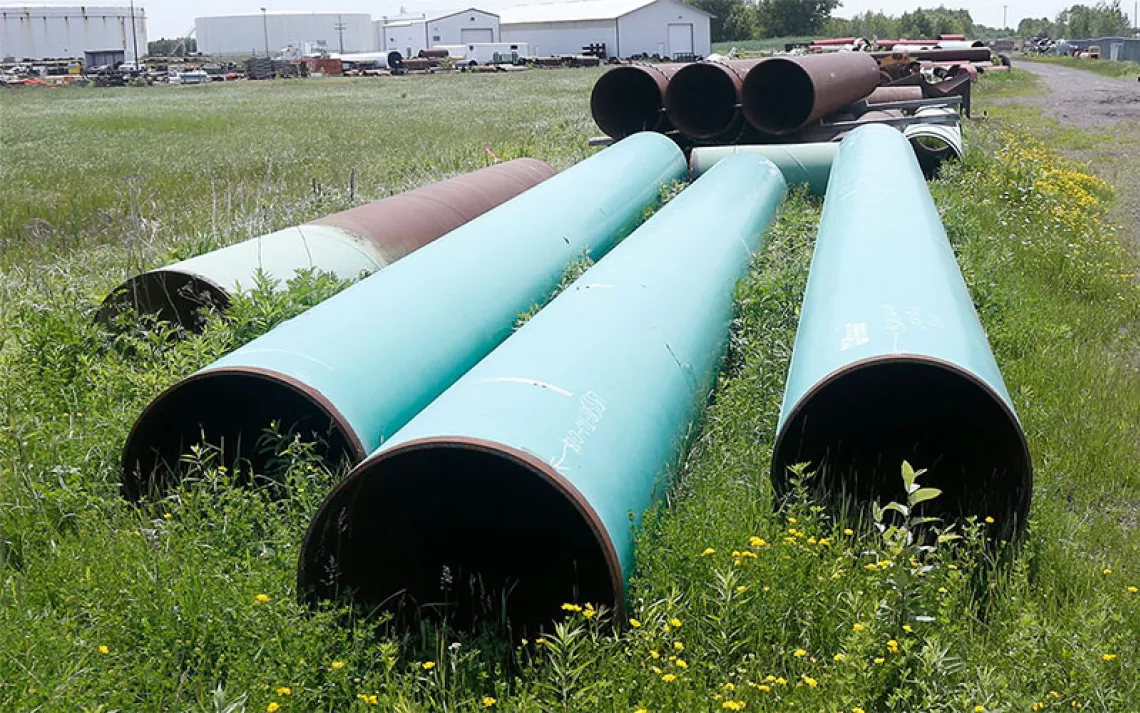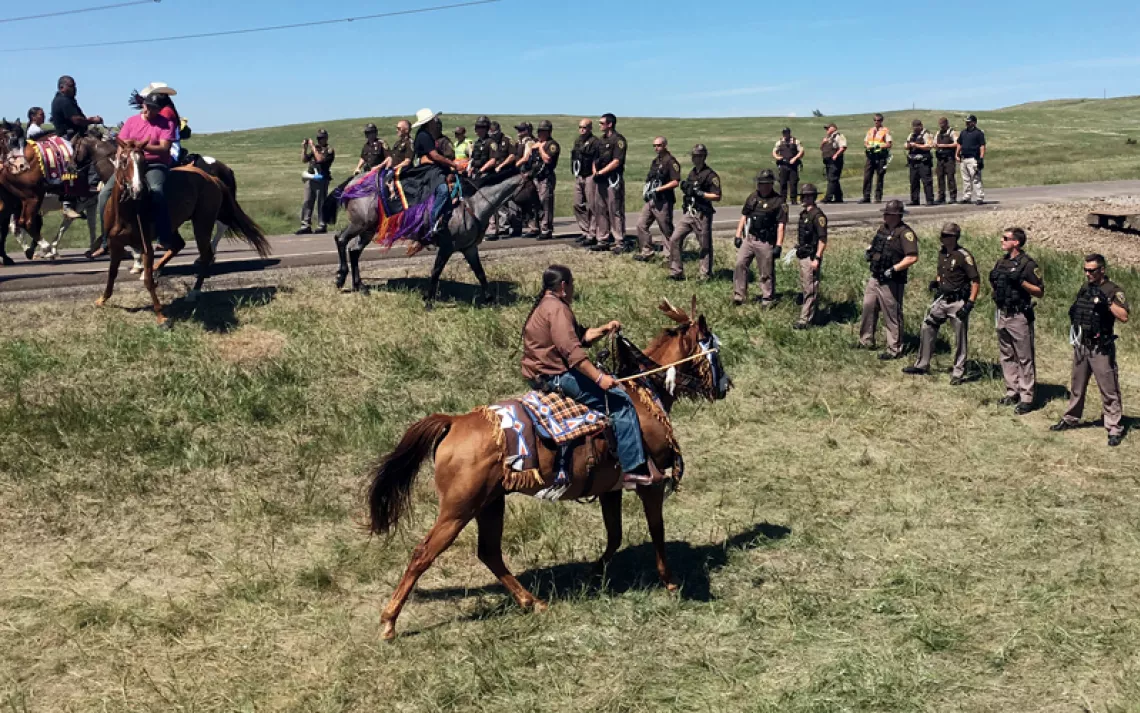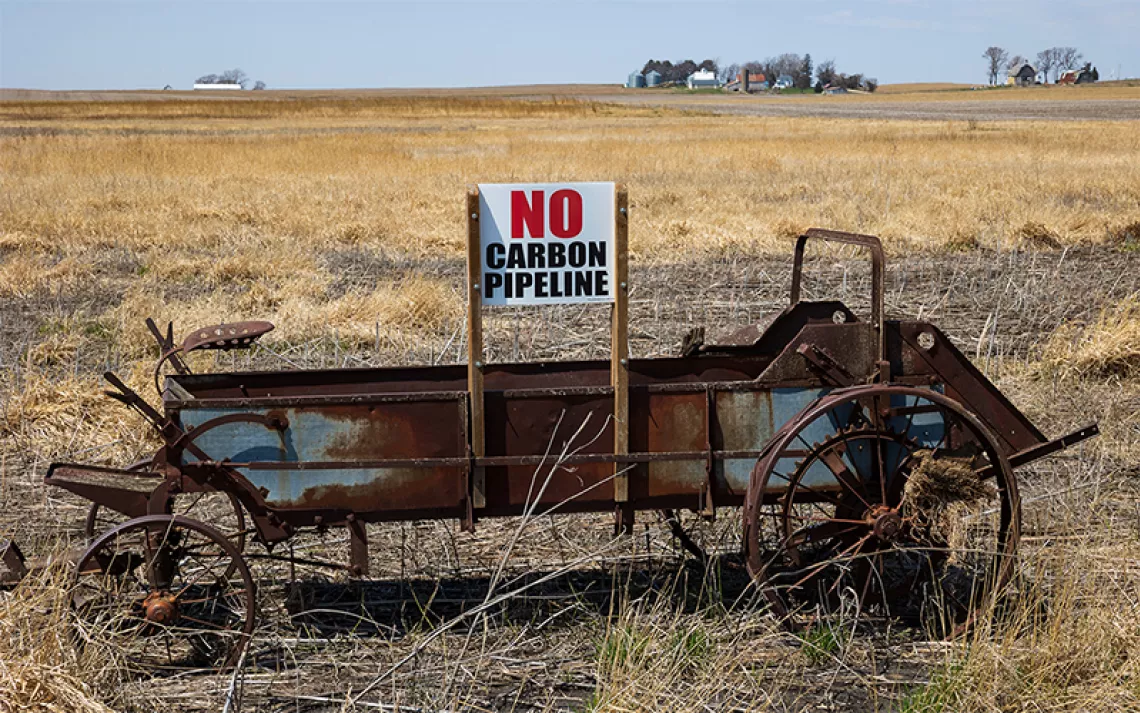Standing Rock Sioux Claim Major Victory Against Dakota Access
The fight against the pipeline is far from over, opponents affirm

Demonstrators including Indigenous leaders and climate activists protest on the north side of the White House on January 24, 2017. | Photo by Riccardo Savi/Sipa va AP Images
A federal judge on Wednesday ordered the Trump administration to go back and study the Dakota Access Pipeline’s effects on the Standing Rock Sioux Tribe and other Indigenous peoples near Lake Oahe in North Dakota and South Dakota, finding it used a sloppy environmental review process to illegally greenlight the pipeline.
“After years of commitment to defending our water and earth, we welcome this news of a significant legal win,” Standing Rock Sioux Tribe chairman Mike Faith said in a statement. “Perhaps in the wake of this court ruling, the federal government will catch on too, starting by actually listening to us when we voice our concerns.”
The ruling is a major victory for Standing Rock and other tribes challenging the 1,200-mile-long pipeline and the second time the administration was found to have defied environmental laws over the project. It means the tribes will finally get a full review of the impacts of oil spills from a portion of the pipeline running under Lake Oahe in the Missouri River, a half mile from the Standing Rock Indian Reservation in North Dakota.
The decision also threatens joint plans by Dakota Access LLC and pipeline developer Energy Transfer Partners LLC to boost the pumping capacity of the pipeline. “This definitely throws their expansion plans into doubt,” Sierra Club attorney Doug Hayes said in an interview.
According to Hayes, who is not part of the federal litigation, Dakota Access and Energy Transfer Partners have been "very quietly" and "very quickly" trying to expand capacity from 570,000 barrels of crude oil a day to as much as 1.1 million barrels without seeking additional federal permits. Instead, they’ve applied for state-level approvals to build pump stations in every state along the pipeline route from North Dakota to Illinois.
“There is still an ongoing fight over Dakota Access,” Hayes said. “The Standing Rock Sioux Tribe’s leadership on this federal litigation is really huge and could affect not only the environmental impact statement here but plans for Dakota Access to double capacity.”
US District Judge James Boasberg in Washington wrote that "too many questions remain unanswered" to forgo a full environmental impact statement (EIS) as required by the National Environmental Policy Act. The Army Corps of Engineers, the agency tasked with reviewing the project and granting permits, decided not to complete one after President Donald Trump took office.
Under the Obama administration, the corps had agreed to prepare an EIS on Dakota Access's request for a permit to cross Lake Oahe after both the Interior Department and the Environmental Protection Agency expressed concerns with a draft environmental assessment concluding the project would have no significant impacts.
The Army Corps of Engineers reversed course after Trump issued a January 2017 directive urging it to fast-track review and approve the project, only completing the less-thorough environmental assessment. The assessment was prepared by Dakota Access with input from the corps, which is permitted under certain circumstances.
In ruling against the corps, Boasberg flagged “expert critiques” of its analysis the agency had neglected to address. These included the likelihood that the pipeline’s leak-detection system would fail, it couldn’t detect slow spills, it hadn’t taken Energy Transfer Partner’s “serious history of incidents” into consideration, and that the worst-case oil-spill scenario the corps had used “was potentially only a fraction of what a realistic figure would be.”
He stopped short of faulting the Army Corps of Engineers and other federal agencies for the deficient review. But he did seem to fault Trump.
“The agencies’ position changed after a new administration took office and President Trump urged the corps to ‘review and approve [the pipeline] in an expedited manner,’” Boasberg wrote. “This is certainly their prerogative, but the existence of the prior comments undercuts the corps’ emphasis on the lack of federal-agency critique in this case.”
The Justice Department, which represents the Army Corps of Engineers, declined to comment on the ruling. An attorney for Dakota Access did not return a request for comment.
Boasberg requested additional briefing on whether to shut down the pipeline while the corps prepares its new analysis. Earthjustice attorney Jan Hasselman, who represents Standing Rock, said in a statement that the tribe “will continue to see this through until [the pipeline] has finally been shut down.”
But if the pipeline stays online, the tribes can still expect environmental benefits via the environmental impact statement, Hayes said. The corps could order additional environmental mitigation measures or oil-spill-protection technology like shut-off valves, he said, or force Dakota Access to reroute the pipeline by denying the Lake Oahe permit altogether.
The tribes rely on Lake Oahe—a manmade reservoir in the Missouri River created when the Oahe Dam was built in 1958—for drinking water, agriculture, and sacred religious practices. In creating the lake, Congress took over 160,000 acres of reservation and trust lands from the Standing Rock Sioux Tribe and the Cheyenne River Sioux Tribe.
 The Magazine of The Sierra Club
The Magazine of The Sierra Club







